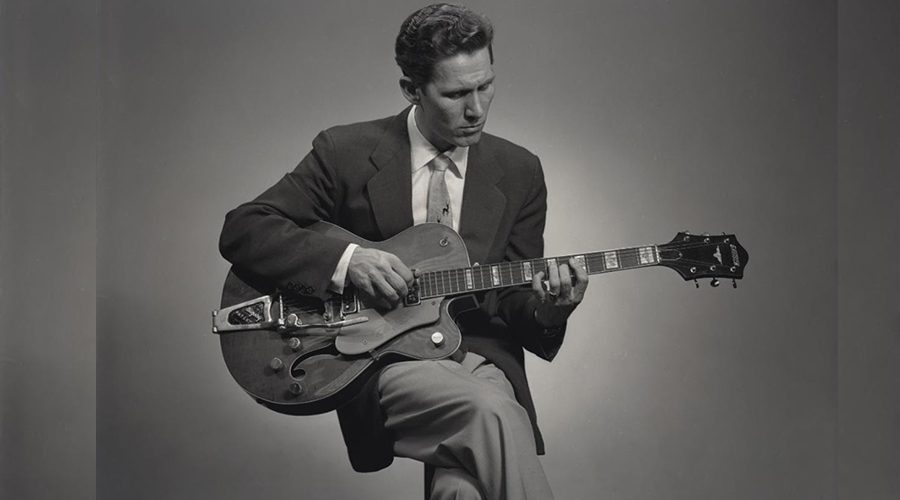Born 100 years ago today, influential guitarist, producer and A & R man Chester “Chet” Atkins (1924-2001).
Atkins’ bright, cheery electric fingerpicking style is both instantly identifiable and eclectic, mixing elements of country, jazz, pop and Tin Pan Alley, drawing from traditional folk forms as well as then-contemporary styles like rock and roll. His influences included Merle Travis, Les Paul, and Django Reinhardt, and he is credited with devising a sound so appealing he blurred distinctions between country and mainstream popular music. He was known for adapting music of almost any genre into his own country style. For example, he recorded familiar big band hits like “In the Mood” and “Mr. Sandman”, but he also gave his own spin to polka tunes, calypso, ragtime, hymns, Christmas songs, and even popular songs by the Beatles.
Atkins’ career as a recording artist began in 1946. Almost all of his over 90 LP albums, recorded from 1953 until the mid ’90s, consist entirely of instrumentals. Thus, while his albums sold well and often charted, his singles were seldom major hits. It was the kind of music ideal for social gatherings, or as mood music underneath a radio announcer’s narration, or as incidental music in films. A lot of the scene-transition music in The Beverly Hillbillies, for example, reminds me of Atkins, though he was not among the many session musicians who performed it.
Atkins was a frequent sight (and sound) on tv variety shows throughout his early years, starting with country shows like the Grand Ole Opry, The Jimmy Dean Show and The Eddy Arnold Show, then moving on to programs with a wider reach such as The Ed Sullivan Show, Kraft Music Hall, This is Tom Jones, and The Joey Bishop Show.
Atkins is also widely credited with revitalizing country music after being put in charge of the Nashville division of RCA Victor in 1957. At the time, rock and roll had siphoned off a lot of talent, and a lot of the audience, for country music. New artists he developed in his stable included Willie Nelson, Dolly Parton, Charley Pride, Jerry Reed, and Waylon Jennings. He moved to Columbia Records in 1983.
Born in Luttrell, Tennessee, Atkins moved to the outskirts of Columbus, Georgia as a boy for health reasons. He was a serious asthmatic; playing music helped him deal with long hours of sleeplessness and confinement. Starting out on ukulele, he also taught himself fiddle, mandolin, and banjo in addition to guitar. Early in his career he worked with acts like The Carter Family, Archie Campbell, and Red Foley. Later he would work with artists as diverse as Arthur Fiedler and the Boston Pops, Garrison Keillor, and Mark Knopfler.
For more on show biz history, consult No Applause, Just Throw Money: The Book That Made Vaudeville Famous, And please stay tuned for my upcoming Electric Vaudeville: A Century of Radio and TV Variety.


You must be logged in to post a comment.